Programs highly beneficial economically
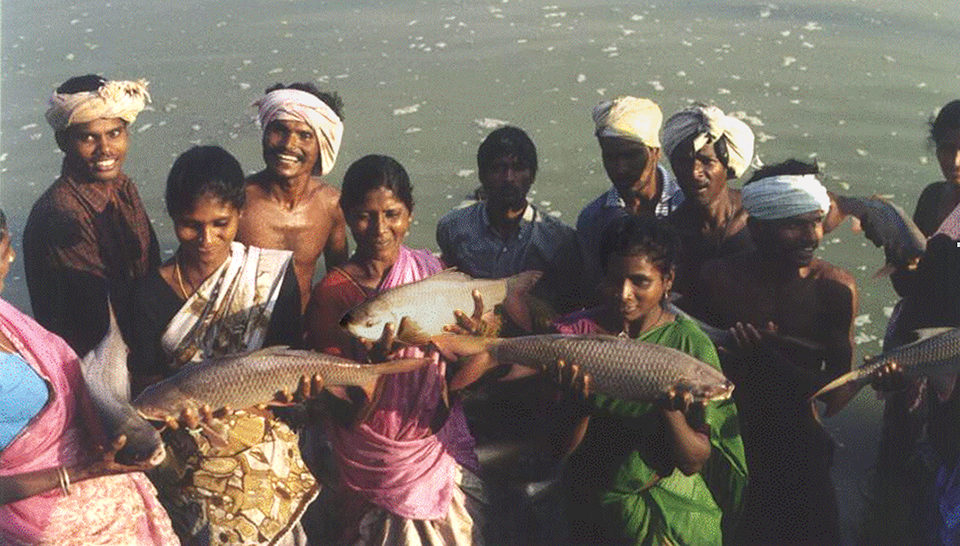
Carp are widely cultured in southern Asia. Their production contributes about 56 percent of the total aquaculture production in the region, with an annual growth rate of 11 percent between 1990 and 2000.
In 2004, the Asian Development Bank provided a technical assistance grant to the WorldFish Center to implement a project entitled “Achieving Greater Food Security and Eliminating Poverty by Dissemination of Improved Carp Strains to Fish Farmers. This constitutes the second phase of the genetic improvement of carp species carried out in collaboration with research and development facilities in six participating countries: Bangladesh, China, India, Indonesia, Thailand and Vietnam.
Practical objectives
The project’s main objectives are improving the nutrition and raising the income of small-scale fish farmers and poorer fish consumers. The objectives are being achieved by increasing food fish production through the development of genetically improved carps for aquaculture and disseminating the improved strains to the resource-poor fish farmers.
The project has two primary components: socioeconomics and genetics. The principal objectives of the genetic component are to establish and consolidate national genetic improvement programs for carp in the six named countries and to compare the performance of the improved strains with locally available carp under farming conditions. The program will also disseminate the improved carps to farmers and enhance the capacity of staff at national aquaculture research institutions, farmers and hatchery managers to breed and manage the improved fish.
Breeding programs
Selective-breeding programs have been carried out for silver barb (Puntius gonionotus) in Bangladesh and Thailand; rohu (Labeo rohita) in India; and common carp (Cyprinus carpio) in China, Indonesia and Vietnam. In all countries, full pedigreed populations have been maintained following an individual animal model to estimate genetic merit and select replacements.
This enables a rigorous genetic improvement program as well as the necessary control of inbreeding to secure long-term response to selection. Across species, genetic gains have ranged 8 to 20 percent per generation. Although selection was for harvest weight only, correlated increases in body length, height and width were also achieved.
The breeding goals for carp are being broadened to include such important traits as survival or disease resistance. In addition, the selective-breeding program is exploring possibilities of integrating molecular genetic information and reproductive technologies.
For instance, in common carp in Vietnam, parentage assignment using microsatellite markers enables the communal rearing of all families from birth in order to reduce common environmental effects, achieve faster growth rate (and thus shorter selection time) and consequently accelerate genetic progress in the population as a whole.
Farm testing
Before releasing the new strains to the production systems, comparisons of their performance with that of local carp strains were conducted in relevant regions of some of the countries involved. Across farming systems in Bangladesh, Thailand and Vietnam, the selected carp strains had 20-40 percent greater growth performance than local stocks of the same species.
A phenomenal (up to 75 percent) improvement of the Jayanti rohu carp relative to the local strains was also observed in a wide range of culture environments in India. Thus, the genetically improved carp strains are being widely adopted and cultured by farmers in Asia.
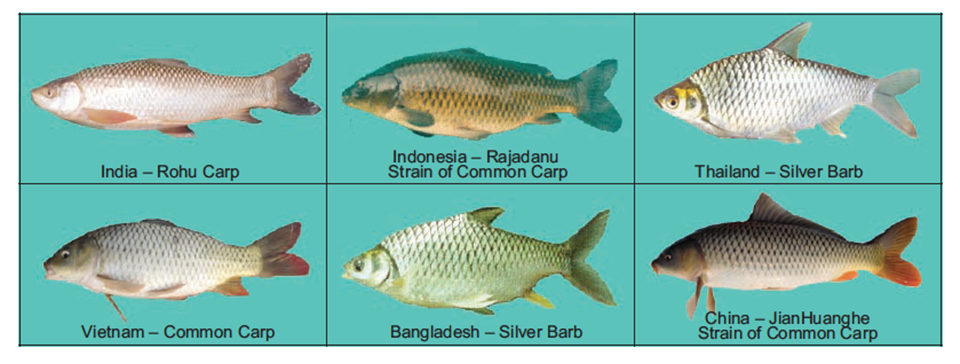
Dissemination
In all countries involved in the project, the genetically improved fish have been transferred to several hatcheries of the local government network, which in turn multiply and distribute broodfish to the next hatchery levels as well as produce seed to directly supply farmers. In each country, millions of fry or fingerlings of the improved carps have reached farmers and producers.
Due to the superior performance of the improved strains, there has been a rapid, growing demand for improved carp seedstock over the past few years. The high productivity of the improved fish has significantly increased profitability for carp producers.
There are plans to disseminate the improved fish beyond national boundaries. The partner countries have expressed strong interest in exchanging genetic material of the improved carp strains. In addition, member countries participating in the International Network on Genetics in Aquaculture have requested the improved fish to meet their own needs of production or develop new strains of carps adapted to local conditions. WorldFish is also working with the United Nations Food and Agriculture Organization (FAO) and other partners to promote further responsible dissemination of genetically improved strains through FAO’s forthcoming Technical Guidelines on Genetic Resource Management in Aquaculture, now in press.
Economic benefits
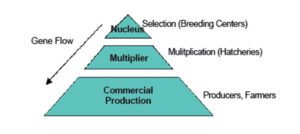
The authors recently conducted an economic assessment of the investment in breeding programs with carp species. A discounting approach was employed to derive economic benefits under different biological, economic and operational scenarios.
Under the most conservative assumptions – such as low rates of reproduction or dissemination – the genetic improvement program for carp was highly beneficial from an economic viewpoint. It is thus worthy for donors and local governments to invest in genetic programs to improve the performance of farmed aquaculture species. The genetic gain is cumulative, permanent and sustainable.
The economic benefits are multiplied and captured by the national economy, especially in countries where a pyramid breeding structure is well established to disseminate the improved genes from the nucleus either directly or indirectly to commercial production (Fig. 1).
For instance, the common carp genetic improvement program at Research Institute for Aquaculture No. 1 in Vietnam annually supplies 10 million-30 million larvae, fry and fingerlings, and thousands of broodstock to hatcheries and food fish farmers.
Capacity building
An important component of the current project is enhancement of local staff capacity. The WorldFish Center has provided technical support in different forms – assisting with experimental design, data analysis, mating design and several other aspects related to the selective-breeding program for carp.
To further strengthen the project’s activities, the center has also conducted training courses on quantitative genetics applied to fish breeding and improvement. A number of students from the partner countries have undertaken their doctorate studies in advanced education institutions by using data sets generated from the genetic improvement program in carp species. Annually, local staff have also trained hatchery personnel and farmers in the management of broodstock, selection of replacements, control of inbreeding and culture of improved carp strains.
(Editor’s Note: This article was originally published in the May/June 2008 print edition of the Global Aquaculture Advocate.)
Now that you've reached the end of the article ...
… please consider supporting GSA’s mission to advance responsible seafood practices through education, advocacy and third-party assurances. The Advocate aims to document the evolution of responsible seafood practices and share the expansive knowledge of our vast network of contributors.
By becoming a Global Seafood Alliance member, you’re ensuring that all of the pre-competitive work we do through member benefits, resources and events can continue. Individual membership costs just $50 a year.
Not a GSA member? Join us.
Authors
-
Dr. Nguyen Hong Nguyen
Scientist, Aquaculture and Genetic Improvement
WorldFish Center
P.O. Box 500
GPO, 10670 Penang, Malaysia[103,114,111,46,114,97,105,103,99,64,110,101,121,117,103,110]
-
Dr. Raul W. Ponzoni
Senior Scientist and Program Leader (Geneticist)
WorldFish Center
P.O. Box 500
GPO, 10670 Penang, Malaysia
Tagged With
Related Posts
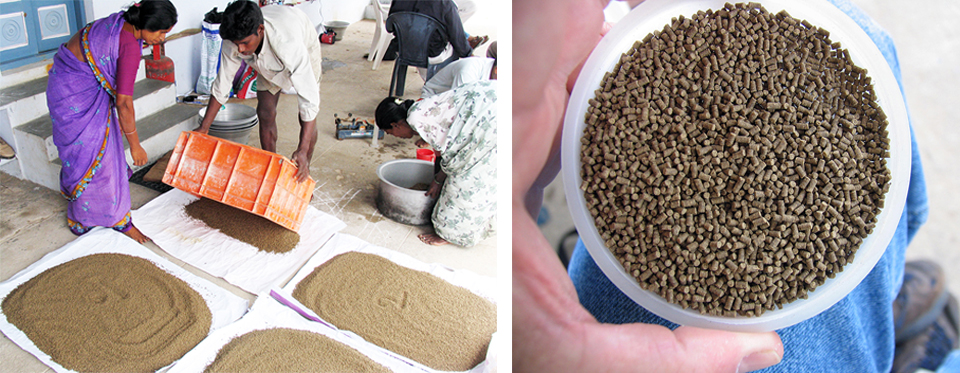
Aquafeeds
A look at India’s fish feed industry
India's fish-farming industry makes limited use of modern feeds, providing potential for the feed sector to grow. Commercial feeds are predominantly used for pangasius farming, followed by a rising popularity in carp culture.

Aquafeeds
A look at phospholipids in aquafeeds
Phospholipids are the major constituents of cell membranes and are vital to the normal function of every cell and organ. The inclusion of phospholipids in aquafeeds ensures increased growth, better survival and stress resistance, and prevention of skeletal deformities of larval and juvenile stages of fish and shellfish species.
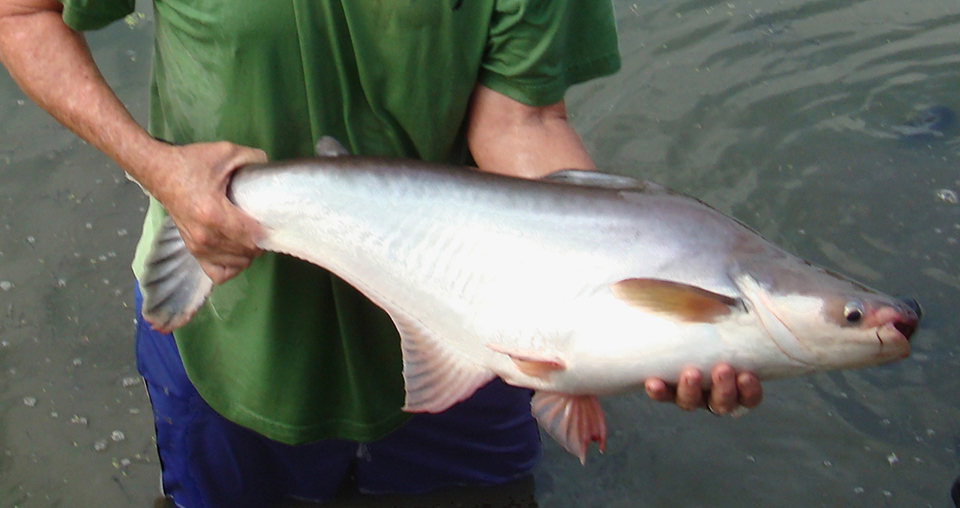
Health & Welfare
Advances in fish hatchery management
Advances in fish hatchery management – particularly in the areas of brood management and induced spawning – have helped establish aquaculture for multiple species.
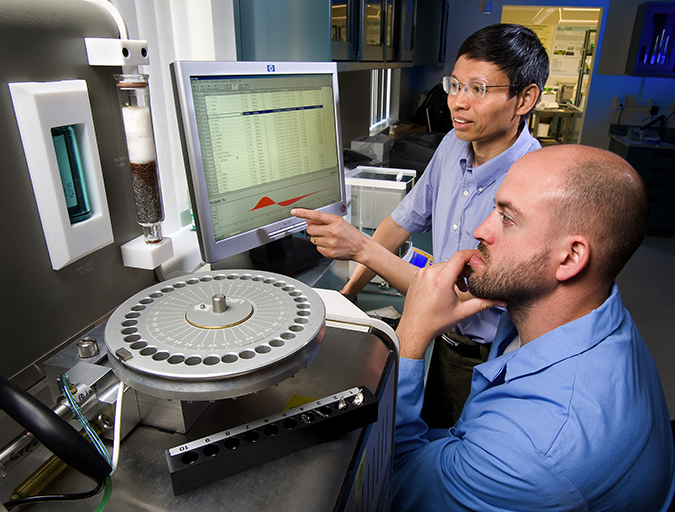
Aquafeeds
Alternative feed ingredient universe to convene at F3 meeting
What started out as a simple yet ambitious contest to drive innovation in the aquafeed sector has evolved into a fully global competition – and collaboration – amongst ingredient suppliers and feed manufacturers.


